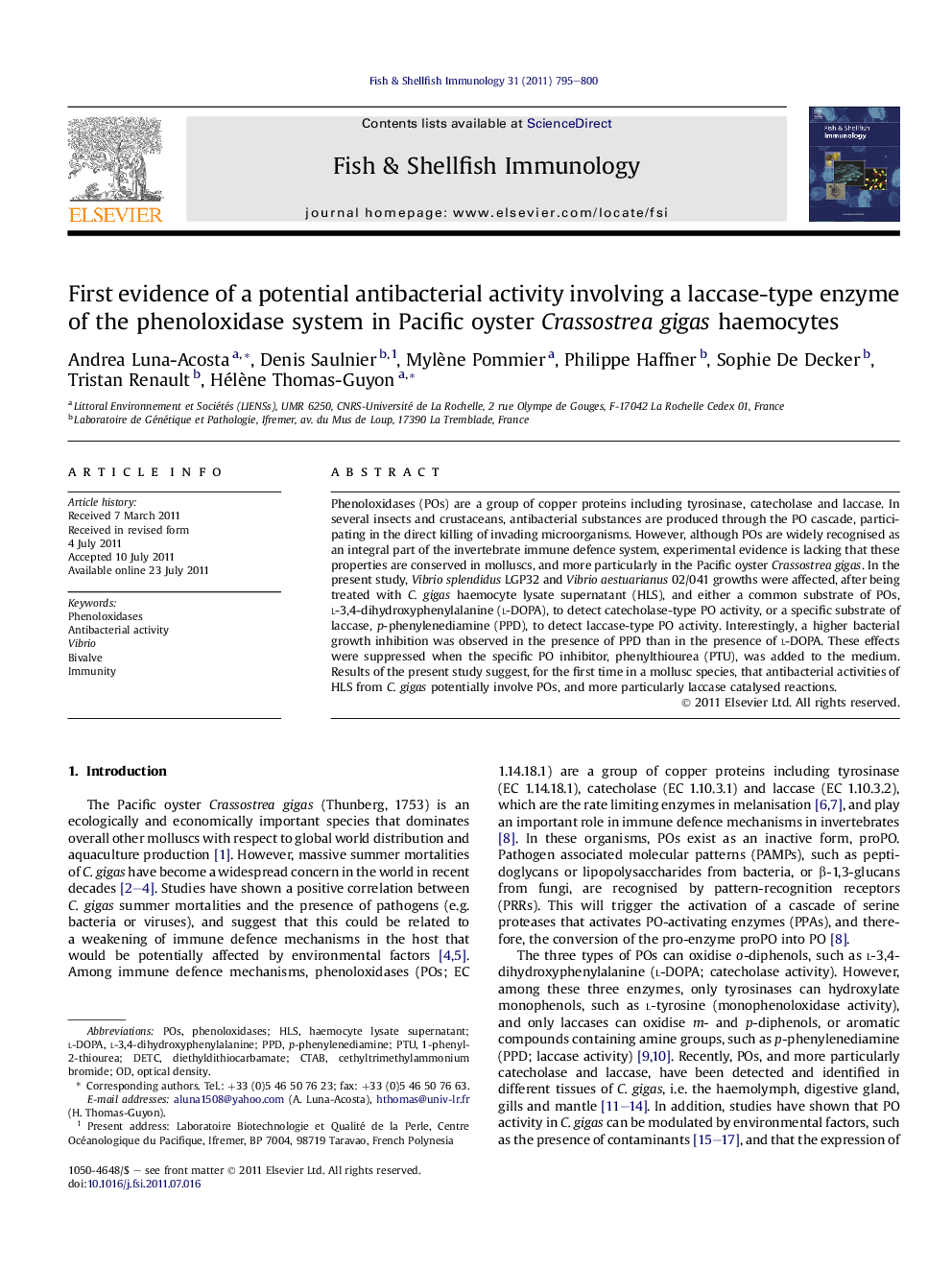| Article ID | Journal | Published Year | Pages | File Type |
|---|---|---|---|---|
| 2431904 | Fish & Shellfish Immunology | 2011 | 6 Pages |
Phenoloxidases (POs) are a group of copper proteins including tyrosinase, catecholase and laccase. In several insects and crustaceans, antibacterial substances are produced through the PO cascade, participating in the direct killing of invading microorganisms. However, although POs are widely recognised as an integral part of the invertebrate immune defence system, experimental evidence is lacking that these properties are conserved in molluscs, and more particularly in the Pacific oyster Crassostrea gigas. In the present study, Vibrio splendidus LGP32 and Vibrio aestuarianus 02/041 growths were affected, after being treated with C. gigas haemocyte lysate supernatant (HLS), and either a common substrate of POs, l-3,4-dihydroxyphenylalanine (l-DOPA), to detect catecholase-type PO activity, or a specific substrate of laccase, p-phenylenediamine (PPD), to detect laccase-type PO activity. Interestingly, a higher bacterial growth inhibition was observed in the presence of PPD than in the presence of l-DOPA. These effects were suppressed when the specific PO inhibitor, phenylthiourea (PTU), was added to the medium. Results of the present study suggest, for the first time in a mollusc species, that antibacterial activities of HLS from C. gigas potentially involve POs, and more particularly laccase catalysed reactions.
► Bacterial growth inhibition was studied in two Vibrio oyster bacterial pathogens. ► Different Crassostrea gigas tissues, haemolymph fractions, and PO substrates, were tested. ► The inhibition occurred only in the presence of C. gigas HLS and PO substrates. ► Bacterial growth inhibition was suppressed with a PO inhibitor. ► Results suggest that HLS antibacterial activities involve laccase-type PO-catalysed reactions.
